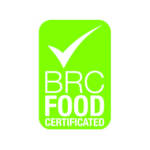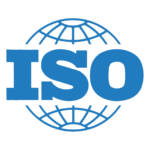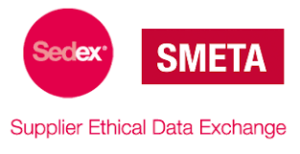HACCP (Hazard Analysis and Critical Control Point)
HACCP Compliance certification
New Technology for Seafood Inspection
The seafood industry is very supportive of the Food and Drug Administration’s (FDA) seafood inspection program based on the principles of the Hazard Analysis Critical Control Point system. This new program was implemented December 18, 1997, making seafood the first food to use this innovative inspection program recommended by the prestigious National Academy of Sciences-on an industry-wide basis.
The benefits of a HACCP inspection program are centered around its proactive approach to food safety. HACCP identifies potential hazards which could occur in the processing and handling of food and requires that measures be established to prevent such food safety hazards from occurring. Critical control points are established to closely monitor those aspects of the process which could result in a hazard should a breakdown in the system occur. When monitoring indicates a possible problem, corrective action must be taken. This approach contrasts with traditional inspection programs which typically look at products after they have gone through the processing stage.
Records must be kept by companies on their monitoring of the critical control points. These are reviewed on a regular basis by FDA inspectors to verify that proper controls are being maintained. These records give the inspectors a historical perspective on conditions at the facility. They can examine records going back to the most recent inspection-compared to current procedures where inspectors can only verify what is going on at the time of the actual inspection.
HACCP was developed by the Pillsbury Company in 1959 for use by the NASA space program. There are private companies that have used a HACCP-based inspection program for several years, including some commercial seafood companies operating under a voluntary U.S. Department of Commerce program and canned food businesses such as those that can tuna and salmon.
The seafood industry believes that the HACCP inspection system provides consumers with even safer and more wholesome seafood products than ever before.
Hilo Fish Company HACCP Certification
Kona Fish Company HACCP Certification
Pacific Trade International HACCP Certification
In addition to HACCP certificate of compliance, the Company is pleased to present its partnership and compliance with the following certification.

The BRC Global Standard for Food Safety is developed by food industry experts from retailers, manufacturers, and foodservice organizations to ensure it is rigorous and detailed, yet easy to understand.
First published in 1998, the Standard is now in its seventh issue and is well-established globally. It has evolved with input from many leading global specifiers.
It provides a framework to manage product safety, integrity, legality and quality, and the operational controls for these criteria in the food and food ingredient manufacturing, processing, and packing industry.
The BRC Global Standard focuses on:
• The importance of management commitment.
• Hazard analysis and a critical control point (HACCP) based food safety programs.
• Quality management systems.
• Auditing good manufacturing processes
• Auditing areas that often have the highest rate of product recalls and withdrawals, such as labeling and packing.
• Developing systems to reduce exposure to food fraud.
• Ensuring consistency of the audit process.
• Providing a BRC Global Standard that is portable enough to allow Additional Modules to be added to reduce audit burden.
• Promoting greater resilience, transparency, and traceability in the supply chain.
 International Organization for Standardization (ISO)
International Organization for Standardization (ISO)
Large volumes of seafood are today transported long distances before being eaten by the consumers. If all the links in the supply chain follow the ISO standards, it will be possible to trace the products back through the entire chain to the catch location or fish farm. Consequently, the consumers will be able to find out where the seafood comes from, its characteristics, resource use, and environmental profile.
ISO standards are developed by groups of experts within technical committees (TCs). TCs are made up of representatives from industry, non-governmental organizations, governments, and other stakeholders who are put forward by ISO’s members.
ISO standards address issues relevant to consumers such as food safety, nutritional labeling, hygiene, food additives, and more. They give consumers the peace of mind that comes with knowing the food they consume meets high standards for safety and quality and contains what it says on the tin. Regulators can rely on best practice test methods and harmonized terminology that are constantly reviewed and improved, as a technical basis for regulation and policy.
 Smeta Sedex
Smeta Sedex
SMETA is an audit procedure which is a compilation of good practice in ethical audit technique. It is not a code of conduct, a new methodology, or a certification process.
SMETA methodology uses the ETI code and local law as the measurement tool. It includes four modules:
• Health and safety
• Labor standards
• Environment
• Business ethics
Hilo Fish Company’s products can have one or all the certification listed above depending on manufacturers and country of origin.
